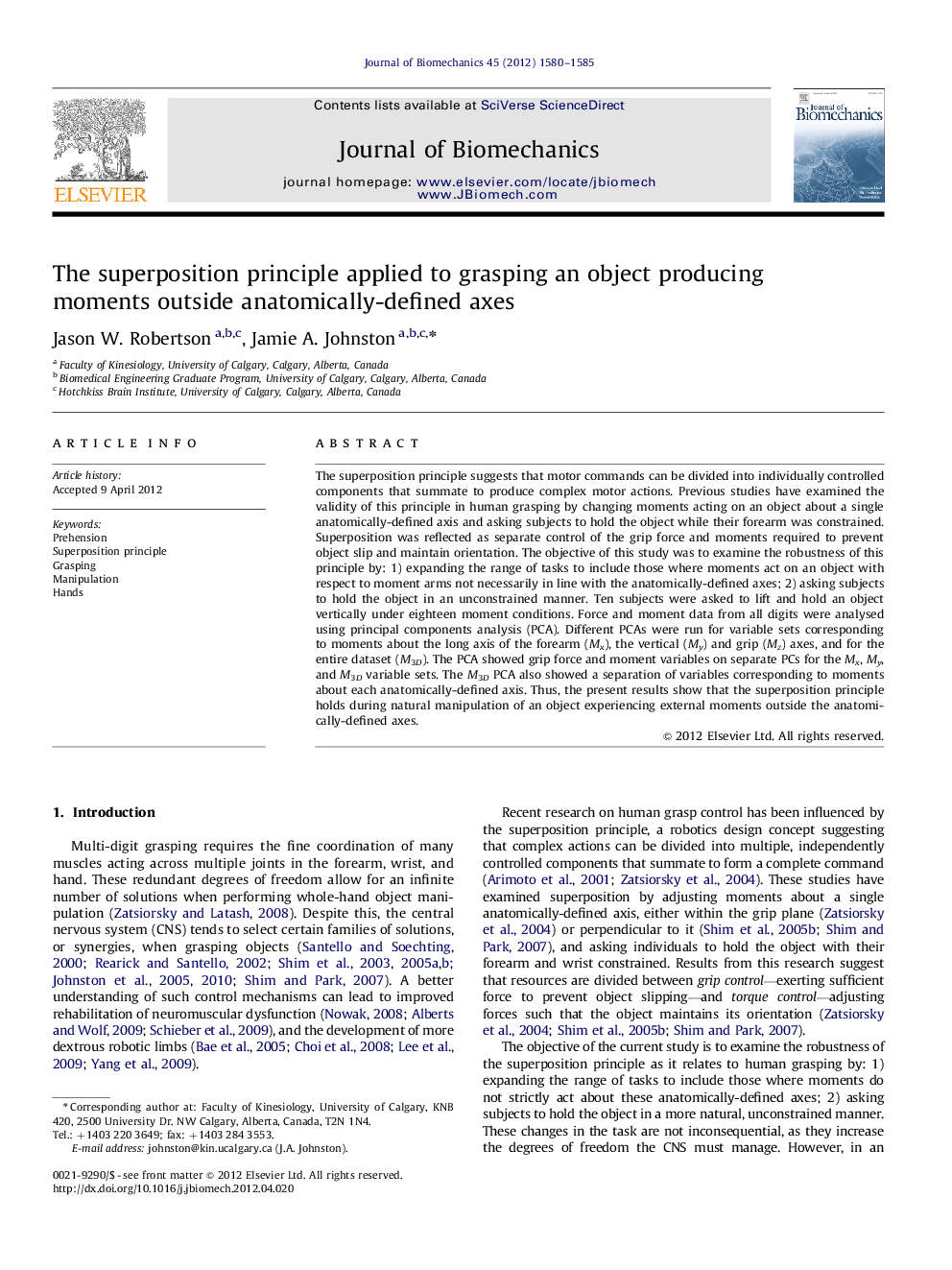| Article ID | Journal | Published Year | Pages | File Type |
|---|---|---|---|---|
| 10432284 | Journal of Biomechanics | 2012 | 6 Pages |
Abstract
The superposition principle suggests that motor commands can be divided into individually controlled components that summate to produce complex motor actions. Previous studies have examined the validity of this principle in human grasping by changing moments acting on an object about a single anatomically-defined axis and asking subjects to hold the object while their forearm was constrained. Superposition was reflected as separate control of the grip force and moments required to prevent object slip and maintain orientation. The objective of this study was to examine the robustness of this principle by: 1) expanding the range of tasks to include those where moments act on an object with respect to moment arms not necessarily in line with the anatomically-defined axes; 2) asking subjects to hold the object in an unconstrained manner. Ten subjects were asked to lift and hold an object vertically under eighteen moment conditions. Force and moment data from all digits were analysed using principal components analysis (PCA). Different PCAs were run for variable sets corresponding to moments about the long axis of the forearm (Mx), the vertical (My) and grip (Mz) axes, and for the entire dataset (M3D). The PCA showed grip force and moment variables on separate PCs for the Mx, My, and M3D variable sets. The M3D PCA also showed a separation of variables corresponding to moments about each anatomically-defined axis. Thus, the present results show that the superposition principle holds during natural manipulation of an object experiencing external moments outside the anatomically-defined axes.
Related Topics
Physical Sciences and Engineering
Engineering
Biomedical Engineering
Authors
Jason W. Robertson, Jamie A. Johnston,
